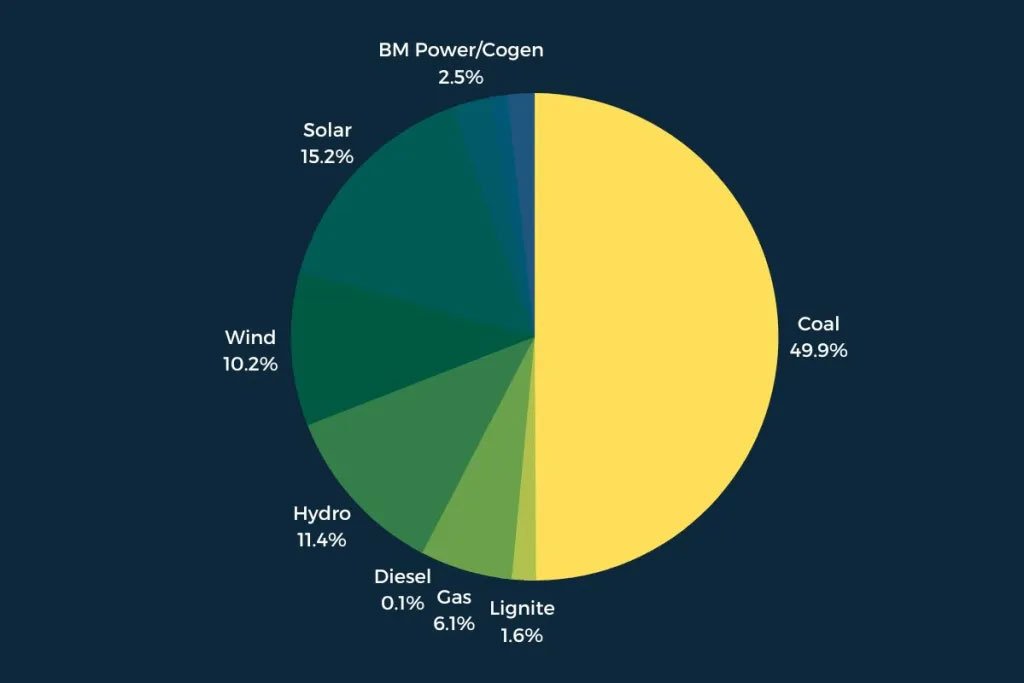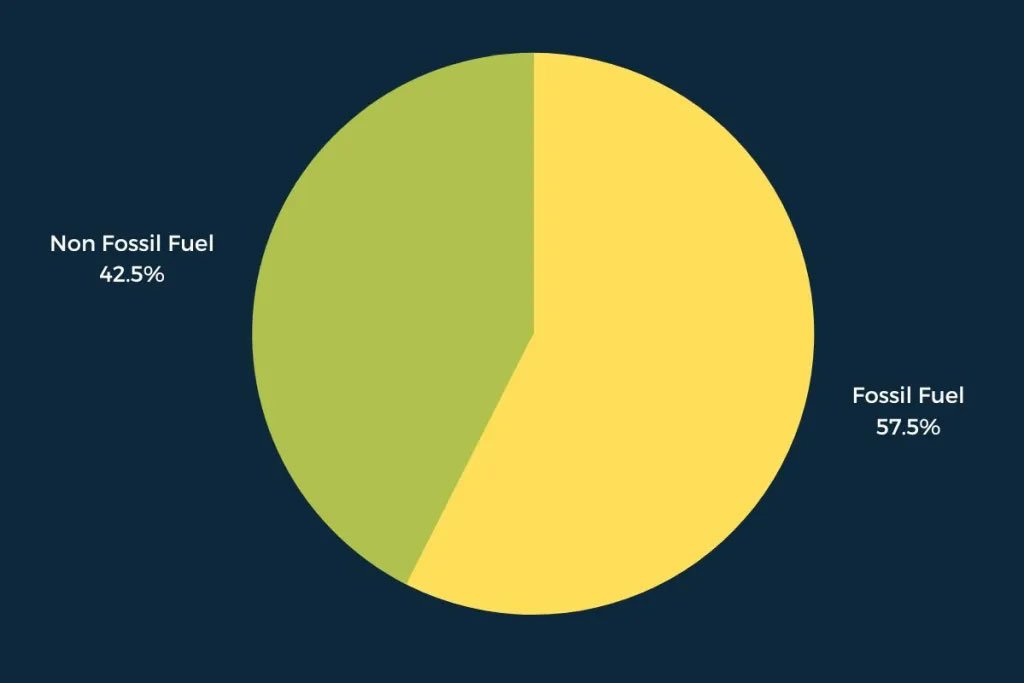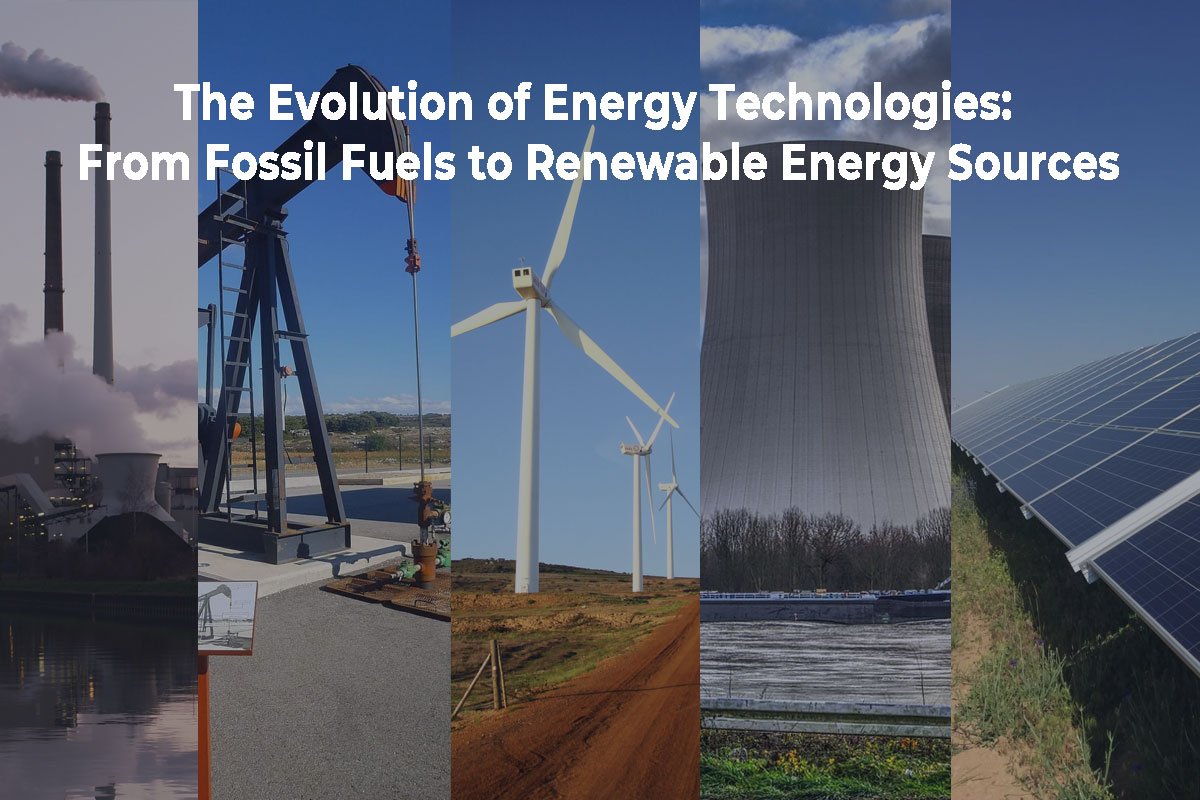The history of energy technology is a fascinating journey that reflects humanity’s quest for survival, comfort, and progress. From the discovery of fire to the harnessing of wind and water to the extraction of fossil fuels, and now the exploration of renewable energy sources, our quest for energy has shaped our societies, economies, and the environment. This article delves into the evolution of energy technologies, highlighting the transition from fossil fuels to renewable energy sources.
Fossil Fuels: The Backbone of Industrialization
Fossil fuels, including coal, oil, and natural gas, have been the primary sources of energy since the Industrial Revolution. They are formed from the remains of ancient plants and animals buried and subjected to intense heat and pressure over millions of years. Coal was the first fossil fuel to be widely used, powering steam engines in the 18th century. Coal-fired power plants currently fuel 37% of global electricity and figures from the IEA show that coal will still generate 22% of the world’s electricity in 2040.
The discovery of oil in the mid-19th century led to the development of the internal combustion engine, revolutionizing transportation. About 40% of energy comes from Oil Globally, which is mostly used for transportation.
Natural gas, initially used for lighting, became a significant source of heat and electricity in the 20th century. The use of natural gas has increased significantly, accounting for around 25% of global energy consumption.
Fossil fuels have been instrumental in driving economic growth and technological progress. According to the U.S. Energy Information Administration (EIA), fossil fuels accounted for about 80% of U.S. and India’s energy consumption. However, fossil fuels have significant drawbacks. They are finite resources, with estimates suggesting that at current consumption rates, known reserves of oil will last around 50 years, natural gas 52 years, and coal 132 years. Moreover, their combustion releases greenhouse gases, contributing to global warming and climate change.
Nuclear Energy: A Powerful but Controversial Source
The mid-20th century saw the advent of nuclear energy, a powerful but controversial source. The first commercial nuclear power plants were built in the 1950s in Shippingport, Pennsylvania. Nuclear power plants, which use the heat generated from nuclear fission to produce electricity, offer a high-energy, low-carbon alternative to fossil fuels. As of 2020, there were 440 nuclear reactors in operation worldwide, providing about 10% of the world’s electricity, according to the World Nuclear Association.
However, nuclear energy has faced significant challenges, including high construction and decommissioning costs, long-term waste disposal issues, and the risk of catastrophic accidents, as seen in Chernobyl and Fukushima. These factors have slowed the growth of nuclear energy, particularly in developed countries.
Hydropower: Harnessing the Power of Water
Hydropower, the generation of electricity using flowing or falling water, is one of the oldest and most established forms of renewable energy. The first hydroelectric power plant was built in 1882 in Vulcan Street Plant, Appleton, Wisconsin. Today, hydropower is the largest source of renewable electricity globally, contributing about 17% of the world’s electricity in 2020, according to the International Energy Agency (IEA).
Hydropower has several advantages, including reliability, flexibility, and low greenhouse gas emissions. However, it also has environmental and social impacts, including habitat destruction and displacement of communities. The future growth of hydropower is likely to focus on small-scale and run-of-river projects, which have lower impacts.
Bioenergy: Energy from the organic material
Bioenergy is the energy of organic matter, namely biomass, produced by plants. Biomass is used to absorb carbon from plants via photosynthesis. When biomass is used to produce electricity, carbon emissions during combustion are released and then only return to the atmosphere when power is produced; this makes modern bioenergy a promising near-zero-emission fuel.
It is used to produce heat, electricity, or biofuels. It is a versatile energy source that can be used in solid, liquid, or gaseous forms.
Bioenergy, which involves converting organic material into energy, is another important renewable energy source. The EIA estimates that bioenergy accounts for about 6% of U.S. energy consumption.
Demand for biomass fuels is much higher than sustainable supply in many cases. Deforestation, land degradation and desertification can be caused by this. The unclean burning can lead to emissions. Also, It can be more expensive than other renewable sources.
Wind Energy: Catching the Breeze
Wind energy, which uses the kinetic energy of the wind to generate electricity, has seen significant growth in recent decades. The first electricity-generating wind turbine was built in 1887 in Glasgow, Scotland by Scottish professor James Blyth. However, it was not until the late 20th century that wind energy became a significant source of electricity, thanks to technological advances and policy support.
According to the Global Wind Energy Council, global wind power capacity reached 1 TW in 2023. Wind energy is now a cost-competitive source of electricity in many regions, and its environmental impacts are relatively low. However, challenges include variability, noise, land use, and impacts on wildlife.
Solar Energy: Harnessing the Power of the Sun
Solar energy the conversion of sunlight into electricity, is the most abundant and fastest-growing renewable energy source. The development of photovoltaic (PV) technology in the mid-20th century opened the door to harnessing solar energy on a large scale. According to the IEA, global solar PV capacity passes 1.18 TW in the first quarter of 2023. The International Energy Agency (IEA) predicts that solar energy could become the world’s largest source of electricity by 2050.
Solar energy has several advantages, including abundance, decentralization, and low environmental impacts. The cost of solar PV has also fallen dramatically, making it competitive with fossil fuels in many regions. However, challenges include variability in sunlight, environmental impact during panel manufacturing, land use, Waste from the solar Panels after their life and the need for energy storage.
The Transition to Renewable Energy: Challenges and Opportunities


The evolution of energy technologies, like from fossil fuels to renewable energy is a complex process with significant challenges. It requires substantial investment in infrastructure, research and development, and policy frameworks. It also involves managing the social and economic impacts, such as job losses in fossil fuel industries and the need for new skills in renewable energy sectors. However, the evolution towards energy technologies like renewable sources also presents enormous opportunities. Renewable energy technologies can stimulate economic growth, create jobs, improve energy security, and reduce greenhouse gas emissions. According to IRENA, the renewable energy sector could employ more than 40 million people by 2050. They can also provide energy access to the 789 million people worldwide who currently lack it, according to the United Nations.
Conclusion
The evolution of energy technologies from fossil fuels to renewable energy sources is a testament to human ingenuity and adaptability. While challenges remain, the potential benefits of renewable energy make the transition not only desirable but also necessary. As we move forward, it is crucial to continue investing in renewable energy technologies and policies that facilitate their widespread adoption. The future of our planet depends on it.



